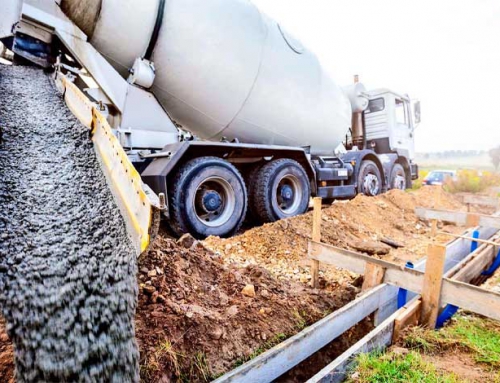What is cement? And everything you should know about this wonderful material
Cement is undoubtedly one of the most important materials in the construction industry. This amazing substance is made of very fine powder which when mixed with water becomes a sticky paste and after being exposed to the air, it hardens like a rock. Due to the importance of cement in the production of concrete, in this article we examine the historical development of cement, how it is produced from raw materials, compositions and properties.
History of cement
The origin of cement dates back to ancient Greece and Rome. The type of material used in the distant past was lime and a volcanic ash that reacted in the presence of water and turned into a hard mass. Roman cement is over 2000 years old!
Portland cement was first substituted for ancient hydraulic lime by John Smeaton in 1756. John Smeaton discovered Portland cement when called upon to build the Eddystone Lighthouse off the coast of Plymouth.
The invention of Portland cement is commonly attributed to Joseph Aspdin of Leeds, England, who in 1824 obtained the patent for a material made from a synthetic mixture of limestone and clay. He called the product “Portland Cement” because it bore a strong resemblance to the material produced by Smeaton.
But the closest cement to modern cement was produced by Isaac Charles Johnson in the south-east of England around 1850. Portland cement production then spread rapidly to other European and North American countries. During the 20th century, cement production expanded worldwide. By 2019, China and India have become world leaders in cement production, followed by Vietnam, the United States and Egypt.
How is cement made?
Portland cement is mainly composed of lime (calcium oxide, Cao), silica (silicon dioxide, SiO2) and alumina (aluminum oxide, Al2O3). Lime is obtained from the raw materials of lime, and other oxides are derived from argillaceous mineral, such as clay. Additional raw materials such as silica sand, iron oxide (Fe2O3) and bauxite (containing hydrated aluminum) may be used in smaller amounts to achieve the desired composition.
Chemical composition of cement:
| Lime | 60 to 66% |
| Silica | 17 to 25% |
| Alumina | 3 to 8% |
| Iron Oxide | 0.5 to 6% |
| Magnesium Oxide | 0.5 to 4% |
| Sulfur trioxide | 1 to 2% |
| Alkalis | 0.5 to 1.3% |
The relative amounts of cement constituents can affect setting time, rate of gain, strength, durability and color of cement. In general, the four main compounds present in cement are as follows:
- Tricalcium silicate (Ca3SiO5 or C3S)
- Dicalcium silicate (Ca2SiO4)
- Tricalcium aluminate (Ca₃Al₂O₆)
- Alumino Tetra Calcium Ferrite (4CaO–Al2 O3–Fe2 O3)
The most common limestone raw materials are limestone and gypsum but other materials such as coral sediments, shale and river mud can also be used. Another raw material is blast furnace slag, which is mainly composed of lime, silica and alumina and is mixed with calcareous material with high lime content.
Kaolin, white clay that contains a small amount of iron oxide, is used as an Argillaceous mineral to produce white cement. Industrial wastes such as fly ash and calcium carbonate from chemicals are other raw materials in cement production but their percentage of use is small compared to natural materials. Other impurities in raw materials that must be completely restricted include fluorine compounds, phosphates, metal oxides, and excess sulfides and alkalis.
The raw materials used to make cement are extracted from limestone mines by blasting and other methods. Softer rocks such as gypsum and clay are extracted directly by machinery. The materials extracted by trucks, railway freight wagons, conveyor belts or ropes are transported to the crushing plant.
Cement production process
The following four steps are performed in the manufacture of Portland cement:
- Crushing and grinding raw materials
- Mixing the ingredients in the correct proportions
- Heating the prepared mixture in the oven
- Grinding heated grains, known as “clinker”, with about 5% gypsum (to control the setting time of cement)
The cement production process is divided into wet, dry and semi-dry. About 4 to 8 percent of the world’s carbon dioxide (CO2) emissions come from cement production, which is a major contributor to global warming.
Some of the problems caused by greenhouse gas emissions in other cement-related sectors, including: increasing the energy efficiency of cement plants, replacing fossil fuels are common with renewable energy and the absorption and storage of emitted CO2. In addition, given that a significant portion of greenhouse gas emissions are related to clinker production.
Some key parameters affect the quality of cement. The physical properties of good cement are determined by the following:
- Softness
- Health test
- Stability
- Strength – power
- Setting time
- Heat hydration
- Heat loss
- Mass density
- Specific weight (relative density)
Types of cement
Different types of cement are possible by combining different ratios of gypsum, clinker and other additives. Cements used for construction are divided into hydraulic or non-hydraulic according to different characteristics.
Non-hydraulic cement
Non-hydraulic cement is cement which cannot harden on contact with water. Non-hydraulic cements are made in liquid form using materials such as non-hydraulic lime and gypsum and oxychloride. After using non-hydraulic cement in construction, it must be kept dry to strengthen and maintain the structure.
When non-hydraulic cement is used in the mortar, this mortar can only be adjusted by drying and therefore acquires its strength very slowly. Non-hydraulic cement is rarely used today due to the difficulties associated with long waiting times for setting and drying.
Hydraulic cement
Hydraulic cement is cement that hardens when combined with water. As a result of chemical reactions, hydraulic cement mixtures maintain their strength and stability forever. Hydraulic cement is primarily made from limestone, some clay and gypsum minerals that burn together in a high temperature process.
Set and hardening of hydraulic cements is caused by the formation of water-containing compounds, which are caused by the reaction between the cement components and the initial contact with water. This is called the “hydration reaction”, which creates the strength and stability of hydraulic cement. Hydraulic cement is used as a main material in modern constructions due to its properties.
Other types of cement are as follows:
- Ordinary Portland Cement (OPC)
- Portland Pozzolani Cement (PPC)
- Fast-setting cement
- Quick setting cement
- Low heat cement
- Sulfate resistant cement
- Blast furnace cement
- High alumina cement
- White cement
- Colored cement
- Aerobic cement
- Expansion cement
- Water-repellent cement
Kinds of cement
Cement is classified into the following kinds:
1- Portland cement type I (ordinary cement):
It is considered to be the most consumed type of cement. This cement is used in normal weather conditions and its use is allowed in various construction works such as bridges, tunnels and other conventional buildings.
2- Portland Cement Type II (modified cement):
This cement is retarder and shows high resistance to sulfate attack. This cement is suitable for concreting in hot weather. The use of this cement is not allowed in structures that are severely attacked by sulfates.
3- Portland cement type III (quick setting cement):
This cement is very fine and therefore its setting time is faster. Type III cement is suitable for cold weather and requires precise and principled processing
4- Portland cement type IV (retardant cement or low heat Portland):
Type IV cements produces little heat during setting. This cement is used for bulk concreting such as dams and large stair foundations to reduce thermal stresses.
5- Portland cement type V (anti-sulfate cement):
This cement is used to resist the strong attack of sulfates and is used to build marine structures.
Good cement properties
It is always recommended to use the best type of cement in constructions. Therefore, the properties of cement must be investigated. Although the desired properties of cement may vary depending on the type of construction, but in general, good cement has the following properties:
- It provides masonry power.
- It hardens quickly.
- It has good flexibility.
- It is an excellent building material.
- It is easily applicable.
- It is resistant to moisture.
Field and laboratory tests should be performed to ensure the quality of cement.
Application of cement
Cement may be used alone for grout but is commonly used in mortars and concrete. Concrete is a mixture of cement, water, fine aggregate (sand) and coarse aggregate (grit). The size of sand particles for most applications is 19 to 25 mm (0.75 to 1 inch), but the grit may be 150 mm (6 inches). Concrete is used for a wide range of construction purposes including bridges, dams, underground tunnels, water tanks, road construction and more.
A mixture of Portland soil and cement is used as a base for road construction. Portland cement is also used in the manufacture of bricks, tiles, pipes, beams, rail fittings and various extruded products. The products are prefabricated in the factory and are ready to be implemented on site. Today, cement is widely produced because concrete is the most widely used building material in the world.
Last word
Cement is an integral part of urban infrastructure. This material is used as a main material in the field of construction due to its very different properties. Cement plays a key role, especially in the manufacture of concrete. However, in order to use it optimally and practically, civil industry professionals need to study the properties of cement and the behavior of this material in various applications to get successful results.










Leave A Comment